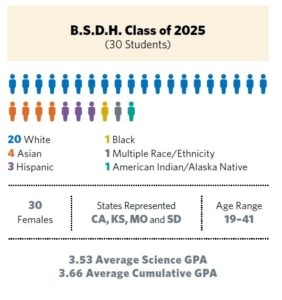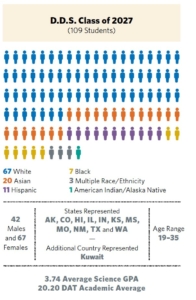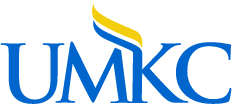The Dental Class of 2025 and Dental Hygiene Class of 2024 celebrated the next phase of their education with the Transitioning into the Profession Ceremony at Unity Temple on the Plaza on Friday, June 2. The ceremony symbolizes the transition into the clinical phase of their education. Continue reading
Explorer
Professor Earns New Honor
Sarah L. Dallas, PH.D., has been named a fellow of the American Society of Bone and Mineral Research (ASBMR), the premier scholarly organization for scientists like Dallas, who specialize in bone and mineralized tissue study.
With roughly 30 years in the society, her designation as a fellow recognizes her long-term engagement with the society and her outstanding contributions to the field of bone and mineral science. Continue reading
Rural Health Rotation Begins Spring 2024
The School of Dentistry is expanding its footprint in the field of rural health. Applications are open for the new Advanced Studies in Rural Health Program, a partnership with Salina Family Healthcare Center (SFHC).
The state of Kansas does not currently have a dental school, so leaders with UMKC School of Dentistry and SFHC hope this program will increase the number of Kansas students who earn dental degrees and stay in rural areas of the state to practice. Continue reading
Faculty/Staff Retirements
Twelve faculty and staff members with a combined 260+ years of service have retired. The School of Dentistry thanks them for their dedication and wishes them luck on what comes next.
Dinah Bounds (10 years)
Office Support Staff
Orthodontics and Dentofacial Orthopedics Continue reading
Incoming Class Demographics


Setting the Stage
The Dental Class of 2027 and Dental Hygiene Class of 2025 were officially welcomed during Orientation, Aug. 16–18. Throughout the three-day event, incoming students got acquainted with the school — taking their composite photos, moving into their lockers and getting started on prep work. They also had the opportunity to get to know each other through various activities and hear from school administrators. Continue reading
School Welcomes New Residents
The School of Dentistry welcomed 11 residents to five advanced education residency programs.
Advanced Education in Orthodontics:
Jacky Lung (D.D.S. ’23) Matthew Greaves (D.D.S. ’14)
Dana Loveland (D.D.S. ’17, A.E.G.D. ’18) Continue reading
Legacy Students
The School of Dentistry is proud to have many multigenerational families. Our success is in part from our rich history with roots stretching back to 1881. Here are the legacy students from the D.D.S. Class of 2027 and D.H. Class of 2025.
Adam Albright:
Sam Smith (D.D.S. ’23) (Cousin); Jordan Campbell Rains (D.D.S. ’22) (Cousin)
Jonathan Armijo:
Michael J. Armijo (D.D.S. ’89) (Father) Continue reading
New Orthodontics Chair Announced
Abraham Lifshitz, D.D.S., M.S., is the new chair of the Orthodontics Department. He comes to UMKC from New York University College of Dentistry, where he worked as the Orthodontics Residency Program director. He is a Diplomate of the American Board of Orthodontics and has more than 25 years of experience in private practice. He earned his D.D.S. from the Technological University of Mexico in 1980 and went on to complete a Certificate in Orthodontics and a Master of Science degree at the University of Iowa.
New Faculty
Lana Krause (D.D.S. ’88) has returned to UMKC as an associate clinical professor of periodontics. Up until now, she has worked in private practice, but also worked as an adjunct faculty member at the School of Dentistry from 1988–1996. She rejoined the faculty full time this year.

